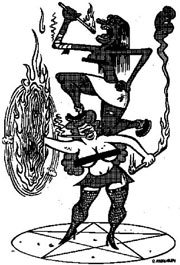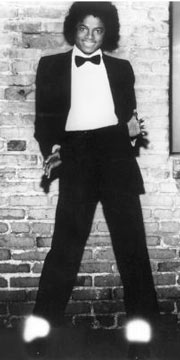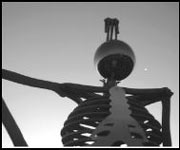Chances are, if you’ve been to an underground dance party, club night, gallery opening, or Golden Gardens in the last few years, you’ve seen the fire performers. Typically dressed in sexy postindustrial fire-retardant costuming, they spin kerosene-doused wicks on chains (called “poi”), writhe seductively, feed each other fire, and wiggle long metal fingers with flaming wicks on the end. It makes for an exciting performance at first—a visceral study of the elements, a show that burns into your retinas, warms the skin, and gets up your nose. Fire performing seems to capture that elusive edge of art . . . or at least it did. The ground has been broken, and this once-interesting art has started to stagnate and slide into clich鮍
Cirque de Flamb頭ember Pyro Boy was once quoted as saying that fire spinning is the “Yo-Yo of the new millennium.” He was right. Fire performing has spread through Seattle’s performing community like the plague, infecting unemployed dot-commers, artists, accountants, yoga teachers, lithe dancers, and a few unfortunate attention hogs. Skilled ’90s performance groups like the groundbreaking Cirque de Flamb頯r the infamous MagmaVOX have spawned a flaming mushroom cloud of fire dancers. Seattle is now home to at least a half-dozen troupes with hundreds of collective members, whose exotic stage names rival rave DJs’ in terms of over-the-top ridiculousness. Strangely, the skill level doesn’t seem to have improved since MagmaVOX’s Eros and Seraphina were literally jumping through hoops and spinning fire on stilts in 1998—in fact, the performance quality seems to have become increasingly homogenous and uninspired.
At the root of this glut of fire performances in Seattle is the relative ease of getting started. Swinging poi is a pretty basic study in gravity, and I’ve watched dancers pick up the basics in less than a week. Naturally, there’s extensive learning beyond that point—I mean no insult to the masters—but amateurs can still capture an audience. Let’s face it: It’s hard not to watch someone tempt fate with fire, especially if they happen to be scantily clad young women (and, oh yes, so many of them are). As Dori, a fire performer from Brooklyn, explained, “The fact that you can spin, spit, breathe, or dance with fire doesn’t make you a performer—it makes you a fire dancer.” Fire dancers are fine— until they decide they’re performers and overtake an event.
That’s perhaps the most frustrating aspect of the encroaching fire trend: Fire shows increasingly happen at events that used to be participatory. Dance floors are cleared so that we can stand around and watch fire spinners—stony faced and oh-so-serious—twist around and flutter flames across their skin.
You know you’re catching an amateur’s show when the primary focus is writhing, some pseudo-spiritual themes, and a lot of sexy glances. The choreography will be pretty simple: Go stage right, swing poi; go stage left, wiggle hips, swing poi. If you’re lucky, maybe you’ll see elaborate costumes and some fire eating. If you’re not lucky, you’ll get an eyeful of pretension and a nose full of smoke.
Seattle has a few very skilled fire performance groups that deserve the support of the larger artistic community—groups like Pyrosutra, which pushes the boundaries by including flags, flaming Hula-Hoops, and green-flamed poi. Good fire performing should show a clear sense of technique and choreography that would impress even if there weren’t fire involved. The stunts should make you gasp, and there should be an obvious dedication to safety: Look for assistants with wet towels or fire extinguishers standing by in case of an accidental dreadlock ignition.
Sadly, the more experienced performers are drowning in the sea of amateurs. The topless faux- spiritual eroticism that so many fire performances have defaulted to might excite the “Show yer tits!” pub-crawl crowd, but I’m here to entreat the fire-performing masses to put down the kerosene, step away from the poi, and listen. I know that fire spinning has meditative effects for those who practice it, but as an audience member, I am growing tired of watching. And what kind of meditation demands an audience? Taking off your shirt does not make your show better. It doesn’t make you look more talented. If I wanted to watch nipples and open flames, I could have stayed home with a lighter and a mirror and saved myself some money.






